The wind swept across the open fields as it had for over a century, brushing against weathered fenceposts and the rusted edges of an old wagon wheel—silent witnesses to a family’s legacy written into the very soil of Clinton. Here, where the mountains meet the rolling grasslands, the story of the Soues family unfolds like pages from a forgotten novel—one of determination, devotion, and deep community roots.
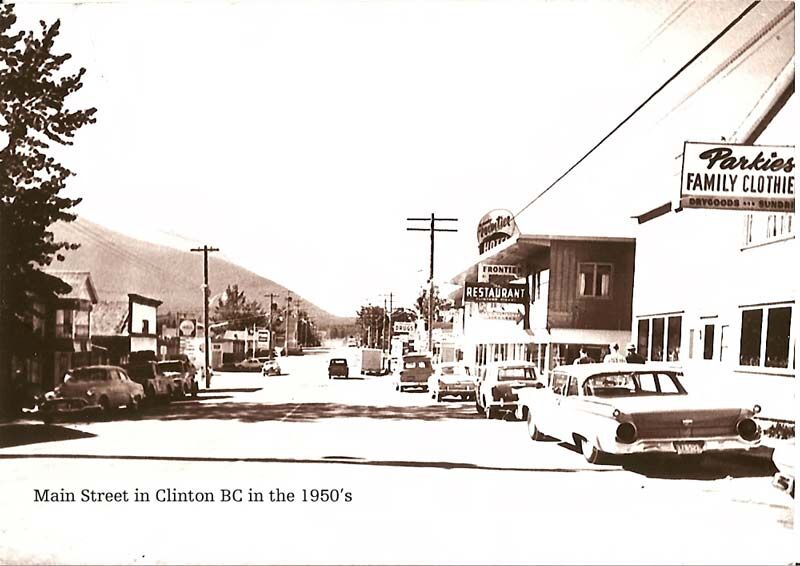
Clinton’s Main Street during the 1950s, reflecting the town’s vibrant community life. – Courtesy of the Clinton Museum.
Clinton, British Columbia, may seem quiet at first glance, but for those who lean in and listen, its streets hum with the stories of pioneers, dreamers, and families who helped build the Cariboo from the ground up. Among them, the Soues family stands as a pillar—one of strength, grit, and generational dedication to this rugged yet deeply rewarding land.
From homesteading in an untamed wilderness to shaping the social and cultural fabric of a small town with outsized character, the Soues legacy is more than a tale of survival. It is a celebration of the spirit that still draws travelers, adventurers, and history-seekers to this corner of the province.
This is their story—and in many ways, it is also Clinton’s.
The Roots Take Hold – Settling in the Cariboo
The Cariboo in the late 1800s was not for the faint of heart. The landscape was vast and wild, and the seasons could be cruel. But for families like the Soues, that wildness was an invitation—a promise that with enough hard work and hope, something lasting could be built.
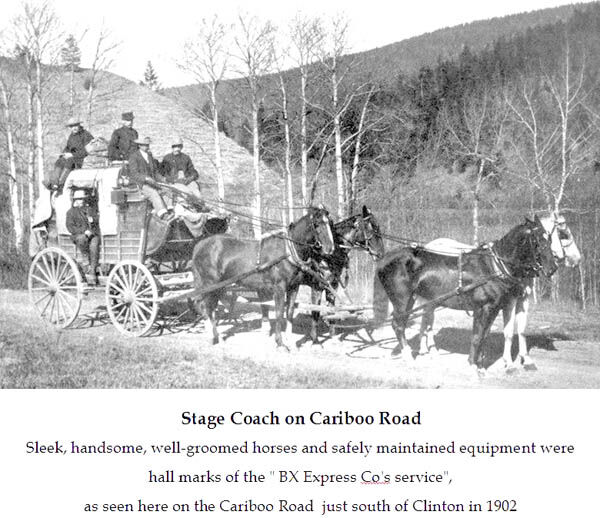
A symbol of reliability, connection, and frontier spirit. – Courtesy of the Clinton Museum
The Soues family arrived in Clinton during a time of transformation. The Gold Rush had already carved its path through the land, leaving behind a patchwork of hopeful settlers, resilient First Nations communities, and the bones of temporary boomtowns. But Clinton—strategically positioned on the Cariboo Wagon Road—was different. It was poised to become a community of permanence.
Louis Soues, believed to be among the first of the family to settle in the area, came not with dreams of fast fortune, but with a vision rooted in the long game: land, family, and legacy.
They staked their claim on a modest stretch of land just beyond the town center—a place where they could raise livestock, plant roots, and begin to shape their lives in sync with the rhythm of the Cariboo. That land would become more than a homestead. Over time, it would evolve into a symbol of endurance, one that locals still refer to with reverence.
“They didn’t just settle here,” said longtime resident and local historian Joan McAllister. “They stayed. They helped this town grow. And they kept coming back, generation after generation.”
(Interview with Joan McAllister, Clinton Museum Archives, 2019)
Building a Life and a Legacy
As the seasons passed and the initial hardships gave way to familiarity, the Soues family began to shape more than a home—they built a way of life that would ripple across the community for decades to come. What began as a modest holding grew into a working ranch known not just for its productivity, but for its reliability. In a region where isolation could be deadly and neighbours meant survival, the Soues name became synonymous with dependability.

The Soues family posed on the front porch of their Clinton, BC home, circa late 1800s. This well-preserved image captures the architectural charm of the era and a glimpse into one of the pioneering families that helped shape Clinton’s early community. – Courtesy of Clinton Museum
They bred cattle, mended fences, and raised children—all while contributing to the shaping of Clinton’s early economy. When town meetings were called, a Soues was often in attendance. When the school needed maintenance or the church needed firewood, it wasn’t uncommon to see the family wagon pulling into view.
The family’s ethos was simple: help where you can, work hard, and leave things better than you found them.
“If you needed a hand, the Soues boys would show up before you had to ask,” recalled Gordon Fraser, a lifelong Clinton resident whose grandfather farmed just a ridge away.
(Interview conducted for the Clinton Oral History Project, 2008)
By the early 20th century, the family had become a familiar presence—not just on the land, but in the hearts of those who called Clinton home. Their homestead, tucked between rolling fields and forested edges, served as a waypoint for travellers, a refuge during storms, and, on more than one occasion, the site of a good old-fashioned community barn dance.
The Soues family believed in stewardship—not just of land, but of people. This sense of community responsibility made them more than landowners. They became bridge-builders—connecting old-timers to newcomers, First Nations neighbours to settlers, and families to the town they were slowly learning to call their own.
“They were the kind of people who didn’t need recognition to do what was right,” said Mary Talbot, a former schoolteacher whose great-aunt worked alongside a Soues family member during the 1930s. “They just showed up. And that mattered back then—still does.”
(Interview with Mary Talbot, Clinton Historical Society Newsletter, Fall 2005)
As Clinton grew, so did the Soues family. Generations came and went, but the thread of community-minded resilience remained constant. From the first fencepost to the final timber laid in their barn, the family’s story was inseparable from the land—and from Clinton itself.
Weathering the Storms – Clinton’s Changing Times
No family legacy is built without weathering storms—and for the Soues family, adversity came in many forms.
In the 1930s, the Great Depression swept through the Cariboo with an unforgiving hand. For many ranchers, the struggle was existential. Markets dried up. Equipment rusted. Families packed up and left, chasing work down south or simply walking away from dreams that had become too heavy to carry.
But not the Soues.
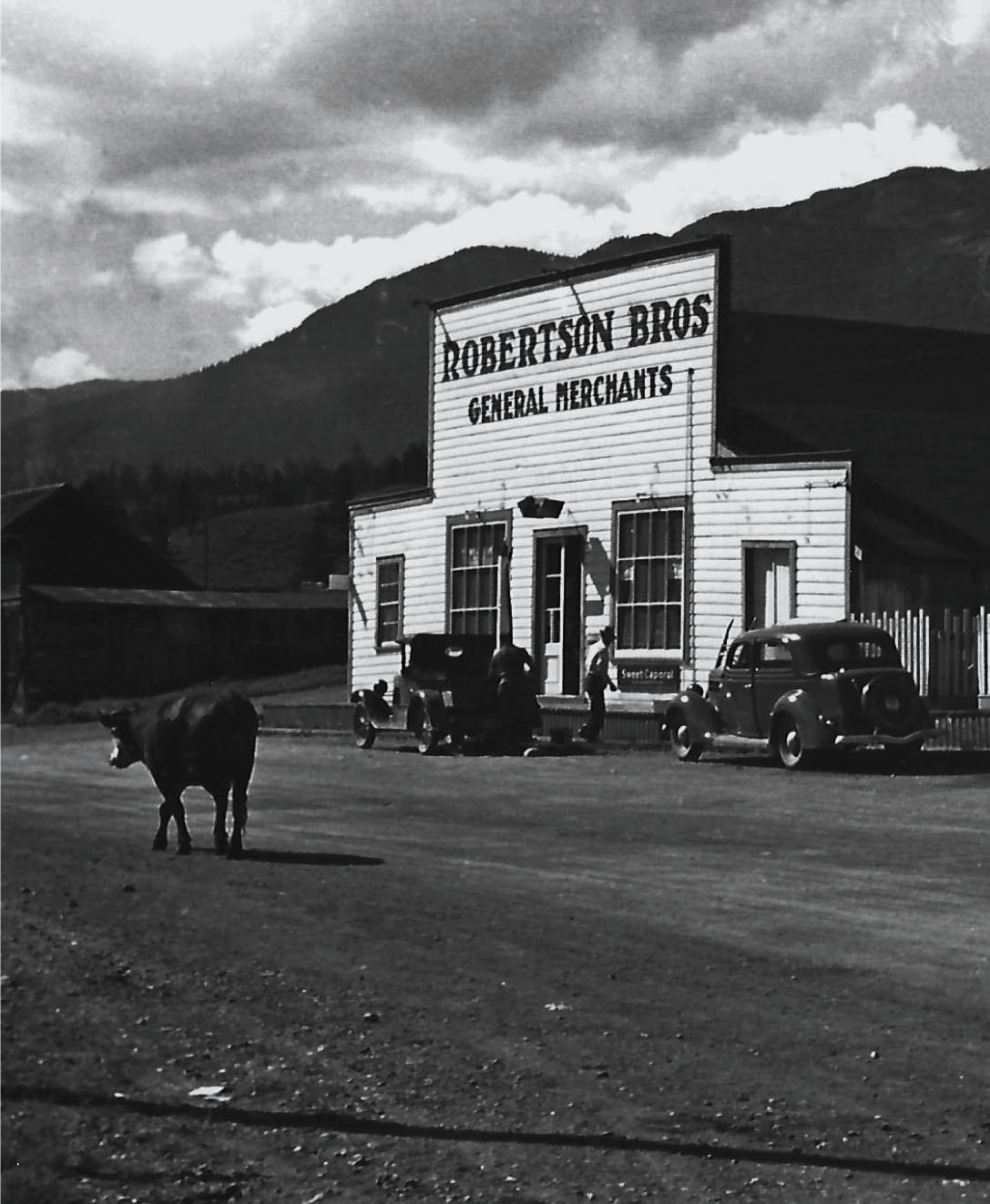
A glimpse into the past: Robertson Bros General Merchants, once a bustling hub of commerce, stands as a symbol of early rural life—complete with vintage cars, a cigarette sign, and even a wandering cow. – Courtesy of Clinton Museum
Instead, they did what they’d always done: they adjusted. The herd was thinned, the luxuries postponed, but the work never stopped. Family lore tells of one especially harsh winter when the Soues family pooled their remaining supplies to host a hot meal for neighbours who had even less.
“That winter, the only warmth some folks had came from the Soues table,” said William “Billy” Rowe, now in his 90s, who remembers trudging through snowdrifts as a boy to share stew and bannock with his parents at the Soues ranch.
(Personal interview, Village of Clinton Oral History Interviews, 2016)
Through the 1940s and World War II, family members answered the call to service. One Soues son joined the Canadian Army and served overseas, while others held down the fort at home, ensuring that the ranch—and the spirit of Clinton—endured in his absence. The war changed things, as wars always do, but the family’s sense of duty remained unshaken.
Later, during the expansion of the Trans-Canada Highway and the slow shift away from the old wagon roads that had once made Clinton a vital stopover, many feared the town would be left behind. But the Soues family, deeply invested in Clinton’s survival, became quiet advocates for the town’s relevance. They helped support local businesses, took part in community planning meetings, and stood shoulder to shoulder with neighbours who believed that Clinton’s best days were still ahead.
“The Soues weren’t loud about it,” said Thomas Greaves, former mayor of Clinton. “But when things felt uncertain, they were the kind of people who reminded you that our town had heart—and history worth fighting for.”
(Remarks from the 1999 Clinton Heritage Week Address)
They understood that towns don’t survive on nostalgia alone. They survive on effort—on showing up, year after year, even when the spotlight moves elsewhere.
From Past to Present – The Modern Legacy of the Soues Family
Time moved forward, as it always does, yet the presence of the Soues family never faded. Even as Clinton’s storefronts modernized and the hum of fibre-optic internet joined the birdsong of the Cariboo, the family’s roots remained planted in familiar soil.
Some descendants stayed on the land, running the ranch or stewarding its transformation into mixed-use agricultural space. Others ventured beyond the town boundaries—into Kamloops, Vancouver, even further—but many returned, or at the very least, carried Clinton with them wherever they went.
And those who remained did more than preserve history—they breathed new life into it.
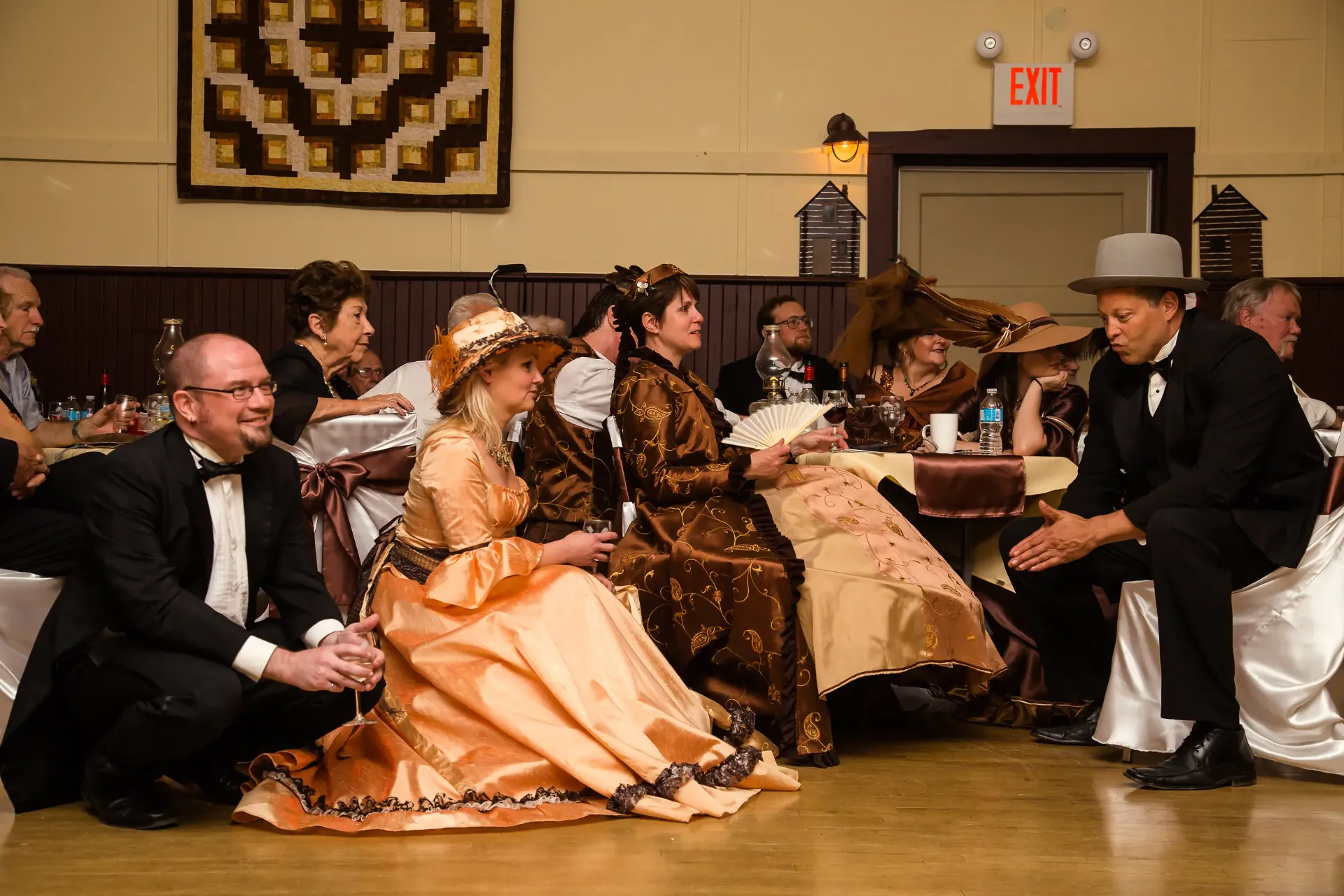
An evening of elegance and nostalgia—guests don historic formalwear at a heritage ball in Clinton, BC, embracing the past through costume, community, and conversation. – Courtesy of Clinton Annual Ball
In the early 2000s, Allan Soues, a proud descendant of the original Soues pioneers, became an active member of the Clinton Historical Society. With a quiet sense of purpose and deep respect for his family’s past, Allan began donating photographs, stories, and family artifacts—helping the museum shape a more complete picture of life in Clinton during its formative years.
Among his most treasured donations was a hand-written ranch ledger dating back to 1899, its ink faded but legible—a living record of daily life, debts and credits, harvest yields, and the people who passed through.
“That ledger was a gold mine,” said museum volunteer and archivist Clare Levesque. “It gave us a direct look into the rhythms of Cariboo ranch life at the turn of the century—what they traded, what they grew, who they worked with. You could almost smell the hay on the pages.”
(Interview for Clinton Historical Society Newsletter, Spring 2018)
But Allan’s impact—and that of his extended family—wasn’t confined to museums and memory.
One Soues great-granddaughter became a teacher at David Stoddart School, known for weaving Clinton’s history into her curriculum—encouraging students to interview elders and build family trees rooted in Cariboo soil. Another became involved in the planning of Clinton’s annual Heritage Week festivities, advocating for the inclusion of Indigenous voices alongside settler stories, ensuring that the town’s legacy would be inclusive and evolving.
Their impact was quiet, but constant.
Their contributions, stitched into the fabric of everyday life—whether it was in the preservation of ranch land, the hosting of potlucks at the community hall, or the small acts of neighbourly kindness that Clinton still prides itself on—spoke to the same values their ancestors had carried west more than a century ago.
“They’ve always been the kind of folks who don’t just live in Clinton—they live for Clinton,” said Audrey Belanger, a local artist whose landscape paintings often feature the Soues property. “You can feel it in how they show up. For every fundraiser. Every parade. Every memorial.”
(Conversation recorded at Clinton Country Fair, 2022)
It’s in those actions that the Soues family’s story shifts from history to heritage—no longer just a family story, but a Clinton story.
Reflections – Why Their Story Still Matters Today
The story of the Soues family is not just one of names in ledgers or photographs in a museum display. It is the living heartbeat of Clinton—a town where history isn’t something that gathers dust, but something that breathes through every handshake, every community supper, every child running down Main Street with a story yet to write.
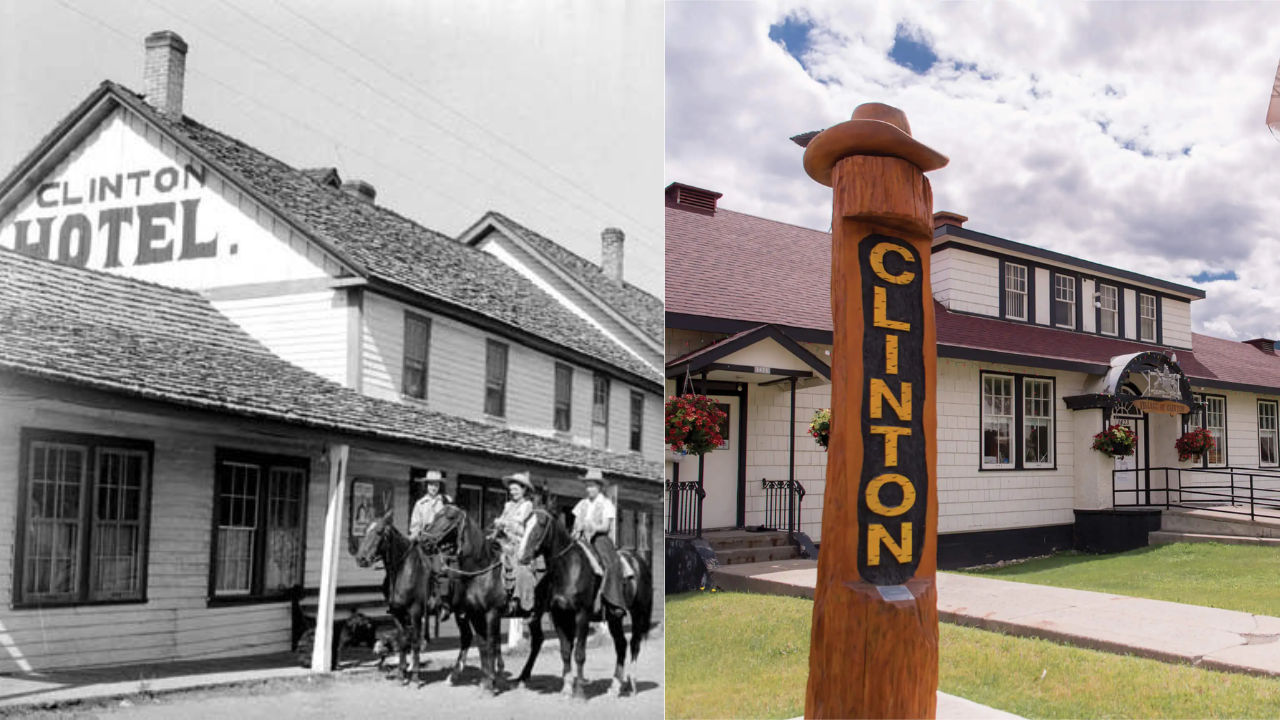
From frontier town to vibrant village—Clinton’s legacy lives on. This side-by-side image bridges past and present, celebrating the enduring character of a community where history meets adventure.
What the Soues family gave Clinton wasn’t flashy or boastful. It was something deeper, quieter, and far more enduring: the belief that ordinary people—through perseverance, generosity, and love of place—can shape the spirit of a community.
Their story is a mirror for Clinton itself. Both have faced challenges—economic change, migration, fire, loss—and both have endured through connection, commitment, and the fierce loyalty of those who call this place home.
“You don’t have to make headlines to make history,” said Allan Soues during a panel discussion at the Clinton Museum’s Pioneer Families Night in 2015. “Sometimes, just staying. Just showing up. That’s what counts most.”
(Clinton Museum Archives, 2015)
In a world that moves ever faster, where small towns often struggle to hold onto their identity, the legacy of the Soues family reminds us that our greatest strength lies in knowing where we come from—and carrying that forward with pride.
Clinton is more than a dot on a map. It’s a living, breathing chapter in the Cariboo’s story, and the Soues family has helped write some of its most heartfelt passages.
So as we stroll through antique shops, cheer at the rodeo, or gather beneath the cottonwoods for a summer festival, we walk not just in the present—but in the footsteps of those who made Clinton what it is.
We Want to Hear From You
Do you have memories of the Soues family or stories about Clinton’s past? Have their values touched your life, or inspired your own family’s journey?
Drop a comment below. Share a photo. Tell us how history has shaped your connection to this town.
Let’s keep these stories alive—together.


 Community
Community Council
Council Reports &
Reports &
